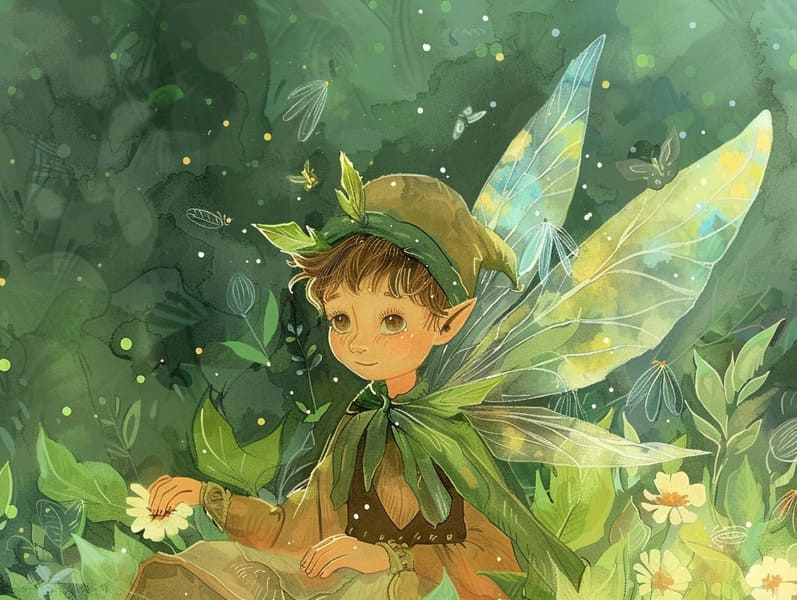A Brief History of Famous Fairy Tales with Their Immortal Elegance.
A Brief History of Famous Fairy Tales with Their Immortal Elegance.
Blog Article

Timeless fairy tales have old origins. These stories have been recounted from one generation to the next far before they were ever recorded. They sprang from a variety of societies, including Asian traditions. They were initially shared among adults, often carrying themes and messages related to the societal norms and beliefs of the time.
The Brothers Grimm, Jacob and Wilhelm Grimm, were among the first to gather and publish many of these beloved stories. Their volume, "Grimm's Folk Tales," included tales like "The Little Glass Slipper," "Hansel and Gretel," and "Snow-White and Rose-Red," which have since become pillars in the world of traditional fairy tales. Similarly, the Danish author's magical stories, such as "The Story of the Little Mermaid," and "The Duckling that Could," have gained the love worldwide, ensuring their place in the pantheon of iconic fairy tales.
Despite their historical roots, classic fairy tales remain as pertinent as ever, especially as nighttime stories for kids. These enchanting tales are now available in diverse formats, including richly illustrated books, magical animations, and free fairy tales online.
Their lasting presence can be credited to several enchanting factors:
Key Lessons: Timeless fairy tales often provide important moral lessons. Fairy tales like "The Wolf and the Liar" teach the importance of truthfulness, while "The Tortoise and the Hare" exemplify the traits of tenacity and unassuming nature. These stories offer the young clear distinctions between correct and incorrect, shaping their moral compass in a subtle yet deep way.
Empathy and Understanding: Ancient fairy tales frequently portray figures facing struggles and tests, prompting readers to sympathize with their struggles and rally behind their triumphs. For instance, "Beauty and Her Beast" highlights the importance of valuing inner qualities to know the real character of a soul, developing empathy and knowledge.
Cultural Recognition: Many old fairy tales are interwoven with the cultural contexts from which they developed. Engaging with these stories can provide intriguing perspectives into different social structures, building a sense of world insight and appreciation.
Inventiveness and Imagination: The extraordinary elements in ancient fairy tales—mythical entities—invigorate children’s creative minds. These tales lead readers to enchanted realms, provoking imaginative dreams and a sense of fascination that continues a lifetime.
Classic fairy tales are not only enchanting but also enlightening. They function as captivating tools in fostering various cognitive and affective skills in kids. When old fairy tales are read aloud, they develop awesome site language development by offering new linguistic elements and complex sentence structures. This practice also promotes hearing abilities and focus, as the young focus on every detail, anxious to see what happens next.
Furthermore, discussing the themes and characters of classic fairy tales can enhance intellectual skills and analytical skills. Young readers are shown to find patterns, forecast, and realize cause and effect. These analyses also aid the young verbalize their thoughts and feelings, cultivating their emotional intelligence.
In today’s modern era, the existence of online fairy tales has made these fairy tales more accessible than ever. Web-based platforms and apps make available large libraries of timeless fairy tales that can be perused or listened to anytime, anywhere. Fairy tales recited are particularly liked, extending an immersive method for the young to savor these mesmerizing stories. Spoken stories and read-to-me videos move characters and settings to life, often supported by entrancing melodies and music that heighten the storytelling experience.
The unfading fascination of traditional fairy tales lies in their ability to transform to modern days while staying true to their fundamental ideas. Contemporary revisions of these narratives often integrate more inclusive characters and modern settings, making them familiar to today’s audience. However, the core values of fearlessness, goodness, and even-handedness remain unchanged, continuing to resonate with young listeners of all ages.
Old fairy tales also offer a sense of warmth and predictability. They serve a well-ordered narrative with a unmistakable beginning, middle, and end, often winding up with the ending of conflicts and the triumph of honesty over deceit. This foreseeability can be encouraging for young ones, presenting a sense of stability in an fluctuating world.
Ancient fairy tales continue to entrance and coach new generations, maintaining their splendor and importance in modern society. As children's bedtime stories, they put forth a perfect blend of fantasy and learning, sustaining moral values, empathy, and creativity. The abundance of digital fairy tales and the prevalence of fairy tales told out loud warrant that these traditional stories remain accessible to new generations.
By upholding and recounting these fairy tales, we continue to value the rich tapestry of myths and cultural heritage. Whether you are exploring a vibrantly illustrated book, viewing a online library, or listening on an sound book, the attraction of Grimm's fairy tales is always within reach. These tales highlight of the everlasting essence of storytelling and its ability to draw us together across time and space.
Whether you are reading a gorgeously illustrated book, browsing a web collection, or listening through an read-aloud book, the grace of Grimm's fairy tales is always within reach.
These fairy tales convey of the unfading spell of tales and its ability to tie us across time and space, making a tie that enchants and educates alike.